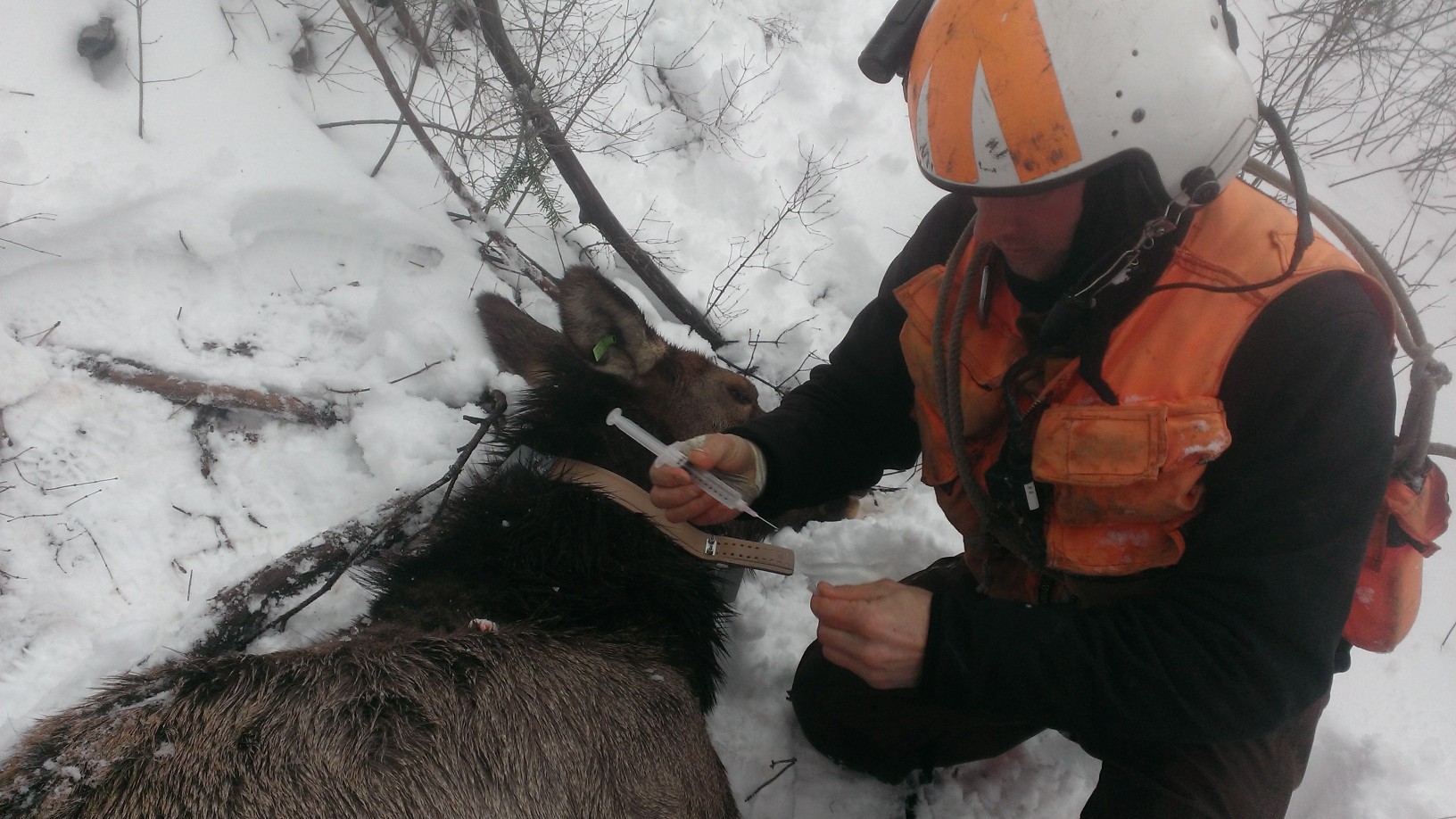Idaho Fish and Game is starting the fifth year of a comprehensive elk mortality study in Idaho’s Panhandle.
Working with a private helicopter contractor, crews will be in the field capturing and collaring elk around mid-December. In this study, elk are being captured with either nets or tranquilizer darts depending upon the terrain and density of the forest canopy.

Cow and calf elk are being fitted with radio collars to monitor their survival rates and movements. The plan includes collaring an additional 60 elk if weather conditions permit. If the targeted numbers are achieved, there will be a total of 180 elk on the ground wearing collars in the ongoing project.
The study area includes big game Units 4, 6 and 7. Capture work will be conducted in the Silver Valley, the North Fork CDA River, and the St. Joe River.
The GPS collars record the animal’s location twice per day. Collars will function for several years. The location, time, and other pertinent data are transmitted to a satellite and then to biologists as an email.
The study plan is to collar and follow cow and calf elk so that Fish and Game can monitor survival rates, habitat use, seasonal movements, and perhaps most importantly to determine the specific causes of elk mortality
Once an animal is restrained or under anesthesia, a handler fits the animal with a GPS collar. Blood and fecal samples (for disease and pregnancy surveillance) are taken, and estimates are recorded for the age of each animal. The elk is then released at the capture site just a few minutes later.
The capture operation has gone very well in past years and is off to a good start this year.
Prior to the development of GPS collars, biologists had to use an antenna in hand or on a plane to determine an animal’s location. Most locations were usually midday, during weather that allowed safe flights and good visibility. Now, locations are taken regardless of weather, giving a much better picture of what is going on with elk in the three units.
A unique signal is produced if the collar is stationary for four hours, tipping biologists off that there may be a dead elk. In that event, the collar can be located as soon as possible and biologists can often (but not always) determine the cause of death.
Since 2014 since the study began, the annual cow survival rate has been 94 percent. In the Panhandle, once an animal reaches one year of age, survival seems to be consistently high, even under different winter conditions. Survival is typically lower and more variable for young of the year animals. This has been the case for elk calves. Calf survival following the mild winters of 2014-2015 and 2015-2016 was 80 percent, which is very high for young animals. The survival rate following the 2016-2017 winter was 50 percent, considerably lower than the previous years. The long duration of snow in low elevations last winter caused some calves to burn entirely through their fat reserves.
New technology, such as the use of GPS collars, has changed wildlife management over time. New equipment and techniques have enabled better data collection and a better understanding of what is actually happening outside in all kinds of weather in both daylight and dark, all year long.
If you see a helicopter circling in the skies at a low elevation in the Panhandle over the next few weeks, it may be a part of this study.
To learn here's another article and video about how F&G uses collars and telemetry to manage wildlife.

